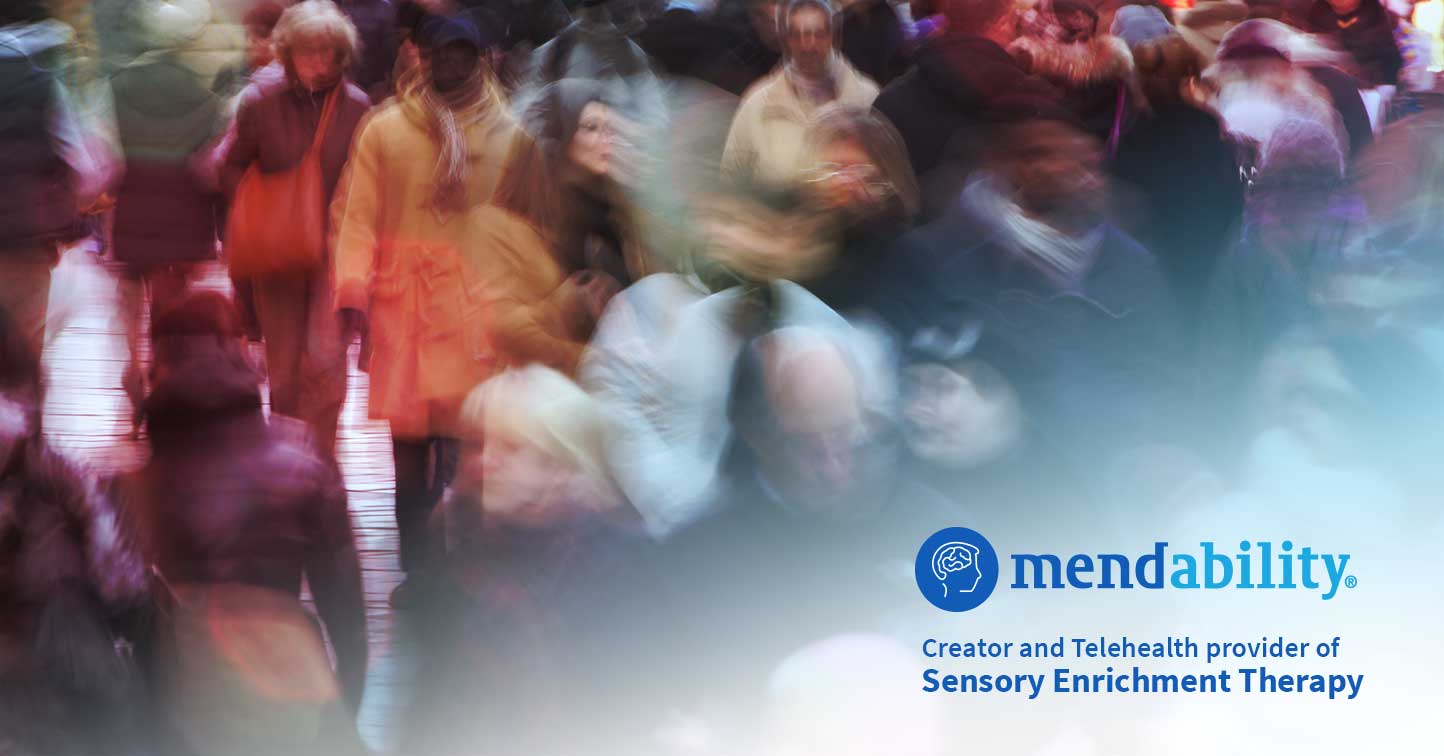Because of visual processing problems, crowded public places can easily overload individuals with autism, making them feel stressed and anxious, which often results in a meltdown.
You might think immediately about the discomfort of noise and flashing lights and people bumping into each other, but there are plenty of unseen reasons why your child is having a hard time.
Five visual processing problems you may not know about:
- Children with autism perceive some movements faster than their typically developing peers.5 This could be cars on a freeway or lights on a tree. Sensory overload happens when you see more than you can process.
- Individuals with autism have deficits in facial recognition.3 Their brains have to work a lot harder to recognize the people around them, which contributes to their social anxiety.
- It’s harder for people with autism to recognize how others feel. In a 2014 study, adults with autism were less accurate in recognizing emotional states than their peers1.
- Children with autism can’t process complex movements, such as people in a crowd2, as well as their peers, which contributes to their anxiety symptoms in large public places like malls.
- The brains of autistic children are hyperconnected (i.e. they have many more connections). There is a direct link between the severity of autism symptoms and the number of connections in the brain4. The more hyperconnected the brain, the more autistic the person is.
Sensory Enrichment Therapy has exercises that are specifically designed to help you to improve visual processing. For more information about our full online autism therapy, visit: www.mendability.com
References
- Alaerts K, Woolley DG, Steyaert J, Di Martino A, Swinnen SP, Wenderoth N. Underconnectivity of the superior temporal sulcus predicts emotion recognition deficits in autism. 2014;9(10):1589–1600.
- Blake R, Turner LM, Smoski MJ, Pozdol SL, Stone WL. Visual recognition of biological motion is impaired in children with autism. 2003;14(2):151–157.
- Schultz RT, Gauthier I, Klin A, Fulbright RK, Anderson AW, Volkmar F, Skudlarski P, Lacadie C, Cohen DJ, Gore JC. Abnormal ventral temporal cortical activity during face discrimination among individuals with autism and Asperger syndrome. 2000;57(4):331–340.
- Supekar K, Uddin LQ, Khouzam A, Phillips J, Gaillard WD, Kenworthy LE, Yerys BE, Vaidya CJ, Menon V. Brain hyperconnectivity in children with autism and its links to social deficits. 2013;5(3):738–747.
- Wallisch P, Bornstein AM. Enhanced motion perception as a psychophysical marker for autism? 2013;33(37):14631–14632.
Is your loved one too anxious to handle crowded places?
Sensory Enrichment Therapy™ helps develop sensory integration and resilience against sensory overload by boosting brain development in these areas.


This is so succinctly explained and makes social anxiety very easy to explain to caregivers and family members around my child.
I knew these things, but couldn’t articulate it.
Thanks a million.
Also, I never knew about the complex movement in a crowd and I never read about hyperconnectivity in the brain.
Thank you sooo much again.
Hi Kim
As always very interesting.
I though that the less connection in a brain the more severe autism.
Obviously was wrong !!!!
Have a great Christmas
Thank you for all contacts.
Anna ( London )
HI, Anna.
You are actually right too. :-) In some areas of the brain, under-connectivity is a predictor of social deficits and in others, hyper-connectivity is the predictor.
Merry Christmas!